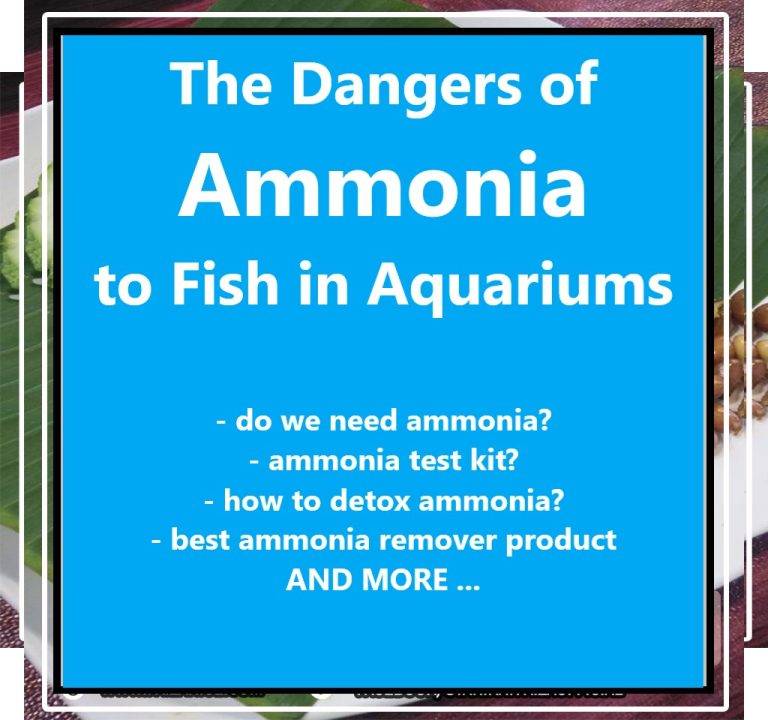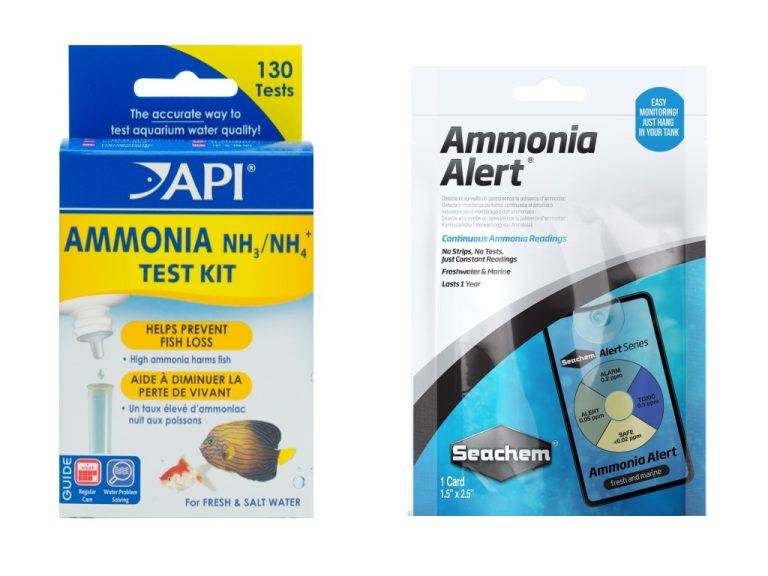The Dangers of Ammonia to Fish in Aquariums
Ammonia is extremely toxic to fish and can kill them very quickly. It is essential to keep the amount in an aquarium as low as possible. Too much can cause serious damage to a fish’s gills, leading to stress, disease, and eventually death. High levels of this will take the life of your ornamental fish. You should always be careful in dealing with this issue.
The aquarium is a home and inhabitant for beautiful ornamental fish. If cared for properly, ornamental fish will be able to live for several years. Like a Discus that can live up to 10 years if cared for properly. With the price of ornamental fish getting more expensive lately, you don’t want to buy it many times, do you? That is why in this entry, we describe in depth an issue that is often ignored by aquarists, namely ammonia.
The Dangers of Ammonia to Fish in AquariumsSummary
- Activity Name: The Dangers of Ammonia to Fish in Aquariums
- Type of Activity: Ornamental Fish
- Category: Indoor Activity
- Difficulty Level: 3 (where 1 is very less and 5 is very physical)
- Equipment Cost: $ (where $ is cheapest and $$$$$ is most expensive)
Tell us about the dangers of ammonia to fish in aquariums
Ammonia can be a serious threat to the health of aquarium fish. This is produced when fish release waste products and as a by-product of decomposing fish food and waste. It is toxic to fish and can even cause death in higher concentrations.
Symptoms of toxicity from ammonia include gasping at the surface, loss of appetite, erratic swimming, and “clamped” fins. To help avoid ammonia poisoning, it is important to perform regular water changes and keep the aquarium clean. Use such as activated carbon or zeolite, can also help keep the level at bay.
Ammonia Definitions
According to www.fdacs.gov “Ammonia is formed from the metabolism of protein and is the major waste product of fish. The majority of ammonia from fish is excreted through the gills, with relatively little being lost through urine and feces. Ammonia is also formed as uneaten feed or other organic matter in an aquarium decomposes.”
Hence, this substance is a very dangerous, toxic substance and needs immediate action. Before that, the question that arises is why do this substance levels become so high? Here are the reasons: –
- Water has not been changed for a long time. Even clear aquarium water does not indicate no ammonia. Pay attention to change the water regularly every 1 week or 2 weeks.
- A lot of fish waste such as food that is not consumed. Ornamental fish will always defecate. So too many feces will cause this level to rise.
- No beneficial bacteria to run an aquarium nitrogen cycle. Preserve beneficial bacteria either by placing a bio ring or a breeding ground for bacteria in the filter. ‘Established Aquarium’ is an aquarium that excels in the nitrogen cycle.
- Rarely clean gravel using a vacuum siphon. Sucked up all the dirt during exchange water on the surface of the aquarium. Water quality will improve and fish will rarely get sick.
- Existing tap water contains ammonia. Fish will get sick quickly even if there is a little ammonia in our tap water.
- Too many ornamental fish in one aquarium. Each ornamental fish will carry ammonia. So, the more fish placed in an aquarium, the higher the ammonia level in the water later.
What are the advantages of low to zero ammonia in aquarium?
The advantages of low to zero ammonia in aquarium are:
- Improved water quality: The lower the amount of ammonia in the aquarium, the cleaner and safer the water is for the fish. This, in turn, creates a healthier living environment and reduces the risk of fish disease and poor water conditions.
- Reduced stress levels: Low and zero ammonia levels help to keep the fish stress free and more relaxed, which is beneficial to their overall health.
- Increased lifespan: Low and zero ammonia levels in the aquarium can help to increase the lifespan of the fish, as it promotes a healthier and more stress-free environment for them.
- Fewer water changes: When ammonia is maintained at a safe level, it reduces the need to change the water as frequently, making it easier to maintain the aquarium and making the fish more comfortable.
What are the challenges of ammonia in fish aquarium?
The challenges of ammonia in fish aquarium are:
- Ammonia is very toxic to aquarium fish and it must be monitored and controlled. If ammonia levels become too high, it can quickly cause fish death.
- Ammonia tends to accumulate in closed aquarium systems, meaning that regular water changes are necessary to prevent the levels from becoming too high.
- Ammonia can also be released into the aquarium water through dead organic matter such as food waste, dead plants, and excess animal waste (e.g. fish excretions).
- Ammonia levels can be further exacerbated by overstocking and overcrowding in the aquarium.
- Finally, the presence of ammonia in the water can lead to an increase in algae growth and corresponding decrease in the levels of oxygen in the water, which can be harmful to fish.
Ammonia Test Kit
There are 2 popular methods used by aquarists to test high or low ammonia levels as follows: –
- Using the API Ammonia Test Kit
- Using Seachem Ammonia Alert
API Ammonia NH Test Kit
The most common way for aquarists to measure the presence of this substance is by using the API Ammonia NH Test Kit. This API Kit is to monitor the dangerous level to help prevent fish loss.
How to use it is to pour 8 drops of API Ammonia NH Test Kit liquid into the test tube provided. Shake top to bottom and wait until the color changes within 5 minutes.
There are 2 bottles in this product, and they are labeled with Bottle #1 and Bottle #2. Do the same process on both bottles.
The product description is as follows: –
- For Fresh and salt water
- Mercury-free, salicylate test
- Test ammonia levels from 0 to 8ppm
Please see the Ammonia Test Result chart to know the ammonia results on your aquarium water.
Suitable for freshwater and saltwater.
Seachem Ammonia Alert
The product description of Seachem Ammonia Alert is as follows: –
- Continuous ammonia readings
- No strips, no tests, just constant readings
- Lasts 1 year
Measure ammonia up to 0.5 ppm. How to use it is to stick Seachem Ammonia Alert into the aquarium. Suitable for freshwater and saltwater.
What happens if ammonia is high on aquarium fish tank?
Ammonia high at 0.5 ppm is toxic and extremely harmful to your fish. If no action is taken can cause fish loss. If this level in your fish tank water is high, the fish treatment that needs to be done is to change the water by 50%. Test with the API Ammonia Test Kit or Seachem Ammonia Alertuntil the level is low, then the fish is safe.
Do aquarium products have an anti-chlorine combination with ammonia detox?
There are some anti-chlorine product comes with ammonia detoxification function. The most popular is Seachem Prime with a high concentration of 5ml treating 200-liters of water. In addition, Fritz Aquatics ACCR Ammonia Chlorine & Chloramine Remover Water Conditioner also has a dual function that is to remove chlorine, chloramine and can also detox ammonia. Both of these products are very safe to use even in overdose. Available on-line at Shopee, Lazada and the aquarium e-shop of your choice.
What are other ways to get less ammonia in an aquarium fish tank?
The safest way to reduce ammonia levels in tank water is to change the tank water by 50%. Use a gravel vacuum and suck out all the dirt and fish residue from bottom aquarium. Wash all filters so that there is no dirt. This can prevent your ornamental fish from the dangers of ammonia.
One way to deal with this high level is to use products that lower to the tolerate amount levels. There are many types of products on the market and among the most popular are API Ammo Lock and Seachem Prime. Pour 5ml can treat 40 liters of water for API Ammo Lock while 5ml Seachem Prime can treat 200 liters of water.
Ammo Lock API and Seachem Prime act fast to address your aquarium problems!
You can lower this level with both of the above products without having to change the water frequently. This method acts quickly by converting ammonia into a substance that is harmless to fish.

